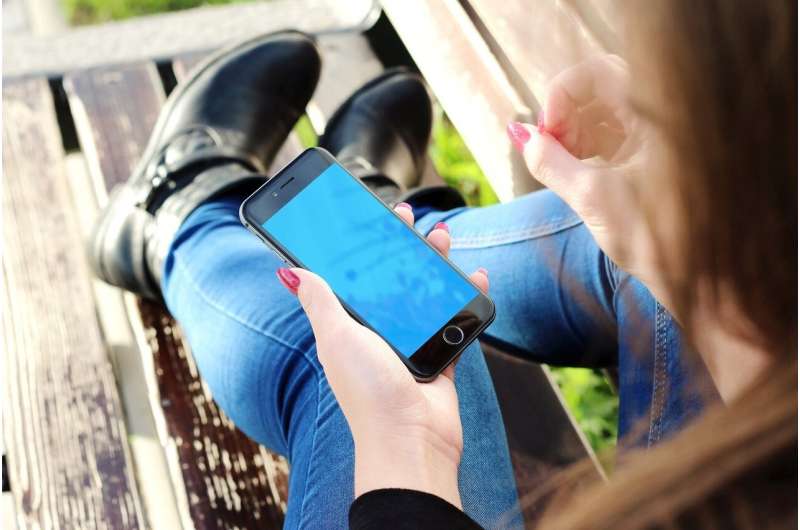
A team of researchers at King’s College London has found that nearly 40% of students surveyed exhibited symptoms of addiction to their smartphone. In their paper published in Frontiers in Psychiatry, the researchers describe their study and what they found.
Smartphones have become pervasive in virtually all advanced societies around the world. And as features of the phone have become more advanced, people have begun to use them for longer periods of time. Some anecdotal evidence has even suggested that some people have become addicted to their phones. In this new effort, the researchers tested such claims by conducting a survey of 1,043 student respondents attending King’s College London.
The surveys included questions meant to gauge the number of time students used their phones, but also to see if phone use had become addictive. They asked standard questions that have been shown to reveal evidence of addiction, such as whether a student was missing out on other activities because they could not put their phone down, if they sometimes lost track of time when using their phone or if they experienced anxiety when away from the phone for very long. The researchers also asked the students questions about their sleep habits.
The researchers found that 406 of the students met the criteria for having an addiction to their phone. These students reported feeling like their phone use was out of control and that they experienced major anxiety when separated from their devices. They also noted that their phone use kept them from doing other things that they knew they needed to do.
The researchers also found that phone use was a contributing factor to sleep deprivation—both in students who met the criteria for an addiction and for those who did not. Approximately 69% of those in the addiction group reported not getting enough sleep, while 57% of those not part of the addicted group also reported sleep problems related to their phone use.
Source: Read Full Article
